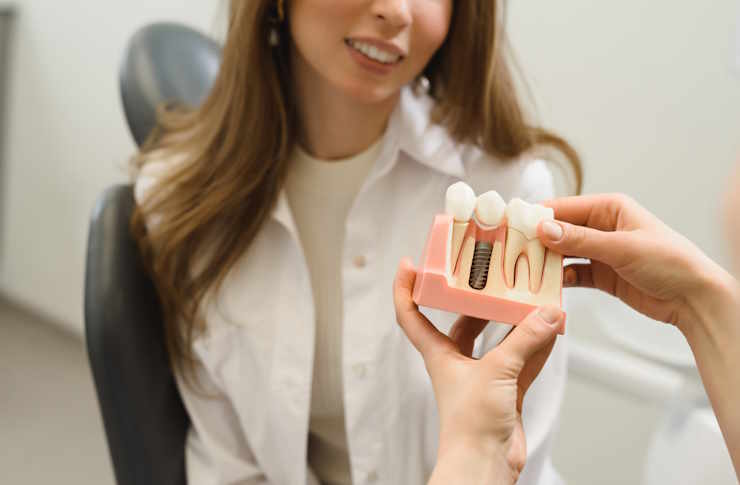Revolutionizing Dental Implants: The Screw-less Solution
Dental implants have long been the go-to solution for replacing missing teeth, but traditional methods often involve invasive procedures and lengthy recovery times. Enter the revolutionary concept of screw-less dental implants, a game-changing innovation that promises to transform the field of dentistry. This groundbreaking technique offers patients a less invasive, more comfortable alternative to conventional implant procedures, potentially making tooth replacement more accessible and appealing to a wider range of individuals.

The Science Behind Screw-less Implants
Screw-less dental implants represent a significant departure from traditional implant methods. Instead of relying on titanium screws drilled into the jawbone, these innovative implants utilize advanced materials and designs that allow for a press-fit or friction-fit placement. This approach eliminates the need for drilling and reduces trauma to the surrounding bone tissue, potentially leading to faster healing times and reduced discomfort for patients.
Benefits of Screw-less Dental Implants
One of the most significant advantages of screw-less implants is the minimally invasive nature of the procedure. Without the need for drilling, patients experience less pain and swelling, and the risk of complications is potentially reduced. Additionally, the absence of screws means there’s no risk of screw loosening or fracture over time, which can be a concern with traditional implants.
Candidacy for Screw-less Implants
While screw-less implants offer numerous benefits, they may not be suitable for everyone. Patients with adequate bone density and volume in the implant site are typically the best candidates for this procedure. Those with significant bone loss may still require traditional implant methods or bone grafting procedures. A thorough evaluation by a qualified dental professional is essential to determine if screw-less implants are appropriate for an individual’s specific case.
The Procedure: What to Expect
The screw-less implant procedure is typically quicker and less complex than traditional implant surgery. After careful planning and imaging, the dentist prepares the implant site using specialized tools designed to create a precise fit for the implant. The implant is then gently pressed into place, where it integrates with the surrounding bone tissue over time. This process, known as osseointegration, is crucial for the long-term success of the implant.
Advancements in Screw-less Implant Technology
Recent developments in screw-less implant technology have focused on improving the implant’s surface characteristics to enhance osseointegration. Some implants now feature nano-textured surfaces or bioactive coatings that promote faster and stronger bone attachment. Additionally, computer-aided design and 3D printing technologies are being utilized to create custom-fit implants that precisely match each patient’s unique anatomy, further improving outcomes and reducing procedure times.
Comparing Screw-less and Traditional Implants
To better understand the differences between screw-less and traditional dental implants, let’s compare some key aspects of these two approaches:
| Feature | Screw-less Implants | Traditional Implants |
|---|---|---|
| Procedure Time | Typically shorter (30-60 minutes) | Usually longer (1-2 hours) |
| Invasiveness | Minimally invasive, no drilling | More invasive, requires drilling |
| Recovery Time | Generally faster (2-4 weeks) | Often longer (3-6 months) |
| Bone Density Requirements | Higher bone density needed | Can be used with lower bone density |
| Cost Estimate | $3,000 - $5,000 per implant | $2,000 - $4,000 per implant |
Note: Cost estimates are approximate and can vary widely based on location, provider, and individual case complexity. It is encouraged to conduct independent research and consult with dental professionals for accurate pricing in your area.
While screw-less dental implants represent an exciting advancement in tooth replacement technology, it’s important to note that they are still a relatively new innovation. Long-term studies are ongoing to fully assess their durability and success rates compared to traditional implants. As with any dental procedure, patients should consult with experienced professionals to determine the best treatment option for their specific needs and circumstances.
Disclaimer: This article is for informational purposes only and should not be considered medical advice. Please consult a qualified healthcare professional for personalized guidance and treatment.
The shared information of this generated article is up-to-date as of the publishing date. For more up-to-date information, please conduct own research.




